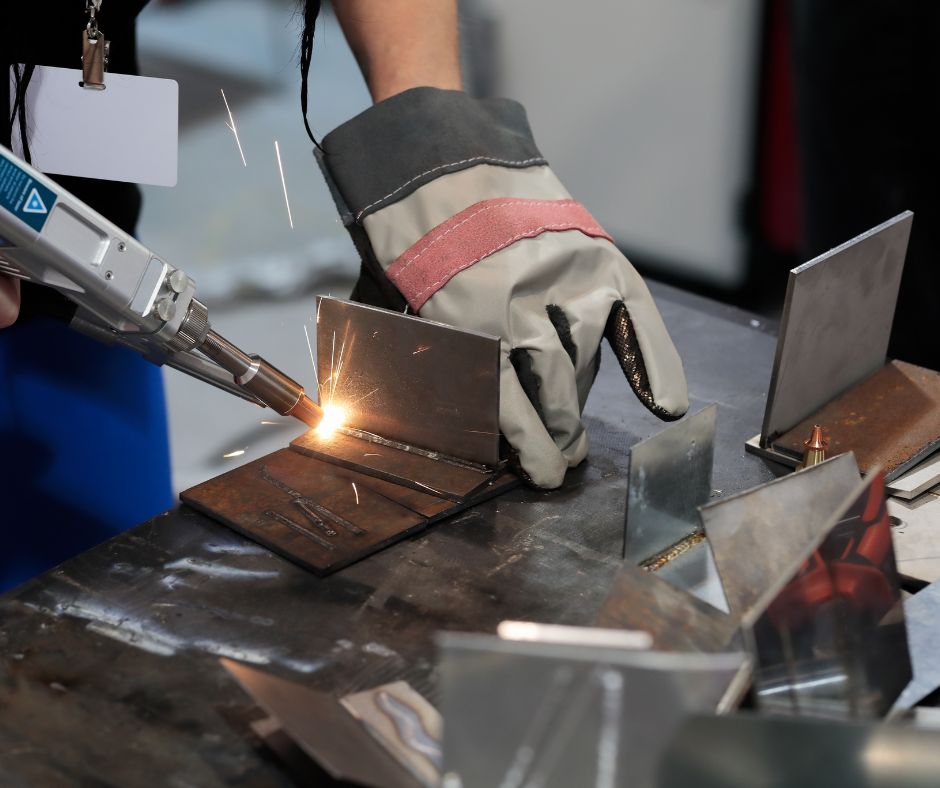Welding is one of the more in-demand skilled trades, combining craftsmanship, problem-solving skills, and technical expertise. But is welding hard? While it can look intimidating at first, with the right foundation, it may be easier and more rewarding than you think.
Stratford Career Institute offers a welding course that allows you to explore welding fundamentals at home before committing to formal training or apprenticeships. It’s a flexible and affordable way to learn the basics and determine if welding is right for you.
In this guide, you’ll discover the skills welders need, the beginner learning curve, essential safety practices, the physical demands of welding, and the career opportunities available in this growing field.
What Are the Skills Required to Become a Welder?
Welding combines technical ability with hands-on craftsmanship. Curious about starting and wondering: “How hard is welding?” It helps to understand the core skills you’ll need to develop, such as:
- Hand-eye coordination,
- Attention to detail,
- Basic math and measurement,
- Mechanical aptitude,
- Safety awareness,
- Physical stamina, and
- Problem-solving.
These skills form the foundation for learning welding basics, and they can be developed over time with practice and the right training resources.
Starting Simple
Many beginners wonder, “Is welding hard to learn?” The reality is that your first steps make a big difference. Starting with advanced methods like TIG or underwater welding can feel overwhelming from the outset, so most beginners start with easier processes.
MIG Welding
MIG welding is often the go-to starting point for beginners because it’s relatively easy to learn. It uses a continuous wire feed and shielding gas, which makes it more forgiving when you’re still figuring out how to control the arc and maintain a steady hand.
Starting with MIG welding allows you to focus on fundamentals such as travel speed, heat control, and positioning without having to manage multiple variables simultaneously.
Basic Welding Patterns
Learning simple patterns, like straight beads, zigzags, or small circles, helps you develop muscle memory and control. These patterns teach you how to move the torch steadily and create consistent welds, which is essential before attempting more advanced techniques.
Practicing these patterns on scrap metal can give you a safe way to improve without wasting materials or risking major mistakes.
Using Basic Materials
Beginners should also start with easy-to-weld metals, such as mild steel, which responds well to standard settings and is less expensive for practice.
Working with straightforward materials can help you learn how different heat levels, wire speeds, and electrode angles affect your weld quality. Once you’re comfortable with the basics, you can gradually experiment with thicker metals like aluminum or stainless steel.
The Importance of Safety
Welding involves heat, sparks, and bright light, making safety a critical concern. Beginners should focus on:
- Personal protective equipment (PPE). Wear a helmet, flame-resistant gloves, and protective clothing.
- Ventilation. Work in a well-ventilated area or use fume extraction systems.
- Safe workspace setup. Keep flammable materials away and store gas cylinders correctly.
- Equipment checks. Inspect cables, hoses, and torches before use to ensure they are in good condition.
Building good safety habits early protects you and those around you as you learn.
Understanding the Physical Demands
Welding is hands-on work, and one of the first things people notice when they step into a shop is the physical side of the job. Welders often stand for long periods, lift or move heavy materials, and work in environments that can be hot, noisy, or cramped. It’s also common to bend, crouch, or hold steady positions while focusing on precise welds.
Many welders build up stamina and strength as they learn, and proper safety practices and ergonomic techniques can help reduce strain. If you’re considering welding as a career, understanding these physical realities can help you prepare and decide if it’s the right path.
Career Opportunities for Welders
A career in welding can lead to jobs in various industries, such as:
- Manufacturing,
- Construction,
- Shipbuilding, and
- Aerospace.
Entry-level roles may involve basic fabrication or repair work, while experienced welders can move into pipefitting, inspection, or supervisory positions.
Taking the First Step Toward Welding
Whether it is hard to become a welder depends on how you start. Focusing on the fundamentals first—basic techniques, safe practices, and beginner-friendly equipment—can make the learning curve far more manageable.
Since 1991, Stratford Career Institute has offered online programs in various fields to help individuals explore new areas and industries. Our beginner-friendly welding course can help you explore welding fundamentals at your own pace.
Contact us to learn more or enroll online today.



